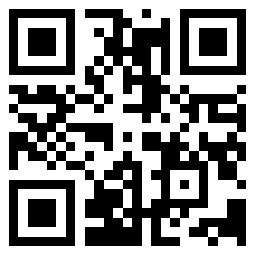

The Signal-Seeker™ line of produts have been developed to allow simple analysis of key regulatory protein modifications by specialists and non-specialists alike. The comprehensive Signal-Seeker™ kits provide an affinity bead system to isolate and enrich modified proteins from any given cell or tissue lysate. The enriched protein population is then analyzed by standard western blot procedures using a primary antibody to the target protein.
Product Uses Include
- Investigate transient regulatory mechanisms
- Measure signalling events of multiple pathway member proteins
- Discover new modifications of your protein of interest
- Gain insight into regulatory mechanisms
- Measure endogenous or transiently expressed protein signalling events
Validation Data: SUMOylation 2/3 Detection Kit White Paper
Kit contents
The SUMOylation 2/3 kit contains the following components:


| Lysis and protein quantitation step | IP and pre-clear step | Wash step | Elution step | Western step |
BlastR™ Lysis Buffer BlastR™ Dilution Buffer BlastR™ Filters Protease Inhibitor Cocktail De-SUMOylation inhibitor Cocktail Precision Red™ Protein Assay Reagent | SUMOylation 2/3 Affinity Beads IP Control Beads
| BlastR™ Wash Buffer
| Spin Columns Bead Elution Buffer
| Chemiluminescent Reagent A Chemiluminescent Reagent B Anti-SUMO2/3-HRP antibody
|
Example results
There are many applications for these kits, here we describe an interesting example:
Application 1: Investigate significant SUMOylation 2/3 events
Immunoprecipitation using the Signal-Seeker™ SUMOylation 2/3 Detection Kit
Denatured cell lysates were prepared as previously reported1 from HeLa cells ("HS43": Heat Shock treated 42°C for 10 min, and "CT37": untreated) and HeLa siRNA SUMO knockdown ("KDS2"). 1mg of lysate was used for the immunoprecipitation (IP) of SUMOylated 2/3 proteins. Western blots of immunoprecipitated proteins were developed using anti-SUMO-2/3 antibody (Cytoskeleton cat# ASM23) (A) or anti-Ubc9 antibody (B). The level of SUMO-2/3 conjugates in heat shock treated cells is higher than control, and shRNA SUMO-2 knock-down reduced the level of SUMOylated 2/3 modified proteins. Chemical conjugation of SUMO-2/3 antibody (11G2) to the affinity bead matrix prevents heavy and light chain leaching. Unconjugated free SUMO is also captured by the SUMO-2/3 affinity beads.
(B) Unmodified Ubc9 is visible near 18kDa. High molecular-weight band indicates that Ubc9 is SUMOylated by a single SUMO-2/3 protein. Ubc9 has previously been reported to be a target for SUMOylation1,2.
1. Barysch S. et al. 2014. Identification and analysis of endogenous SUMO1 and SUMO2/3 targets in mammalian cells and tissues using monoclonal antibodies. Nat Protoc. 9(4):896-909
2. Becker J. et al. 2013. Detecting endogenous SUMO targets in mammalian cells and tissues. Nature Struc. & Mol. Biol. 20, 525-531.

• Pharmacological investigation of SUMOylating and de-SUMOylating enzymes involved in regulation of target proteins.
• Investigate SUMOylation under a variety of different growth factors or drug treatments.
• Examine the interaction of SUMOylated target proteins with its downstream effectors.
• Examine crosstalk between SUMOylation 2/3 and other PTMs for target proteins.
For more information contact: signalseeker@cytoskeleton.com
Associated Products:
Signal-Seeker™ Phosphotyrosine Detection Kit (Cat. # BK160)
Signal-Seeker™ Ubiquitination Detection Kit (Cat. # BK161)
Signal-Seeker™: BlastR™ Rapid Lysate Prep Kit (Cat. # BLR01)
Signal-Seeker™ SUMOylation 2/3 Affinity Beads (Cat.# ASM24-beads)
Signal-Seeker™: PTMtrue™ SUMOylation 2/3 Antibody (Cat.# ASM23)
Click on the pdf icon below to download the manual ![]()
For the most recent publications citing this and other Signal-Seeker™ products, see our Signal-Seeker™ Validation Data Page click here
Visit our Signal-Seeker™ Tech Tips and FAQs page for technical tips and frequently asked questions regarding this and other Signal-Seeker™ products click here
If you have any questions concerning this product, please contact our Technical Service department at tservice@cytoskeleton.com
ebiomall.com






>
>
>
>
>
>
>
>
>
>
>
向左转|向右转
如果是用转录出的cDNA做那跟平时就一样了。不需要特别的试剂盒、
1.模板提取(一般为RNA):Trizol、氯仿、异丙醇、无水乙醇、DEPC处理水
2.模板浓度测定:分光光度计或NanoDrop
3.逆转录:逆转录试剂盒(或者一步法试剂盒),这一步可以用普通PCR做,也可以用水域做。
4.荧光定量PCR试剂:通常有用SYBR Green Mix做的,但是这里建议你用EvaGreen做,灵敏度和平行性都要好于SYBR Green,并且如果你那是ABI或者Stratagene的PCR如果用SYBR Green还需要加一步Rox很麻烦。
5.其他:除了以上的那些还需要离心管、PCR管或板(Axygen反应比较好)、移液枪等,暂时就想到这么多。
和RevertAid™HMinusFirstStrandcDNASynthesisKit,FirstStrandcDNASynthesisKit
大家又没有用过,这个公司的酶据说很好啊。
逆转录(reverse transcription)是以RNA为模板合成DNA的过程,即RNA指导下的DNA合成。此过程中,核酸合成与转录(DNA到RNA)过程与遗传信息的流动方向(RNA到DNA)相反,故称为逆转录。逆转录过程是RNA病毒的复制形式之一,需逆转录酶的催化。 逆转录过程的揭示是分子生物学研究中的重大发现,是对中心法则的重要修正和补充。人们通过体外模拟该过程,以样本中提取的mRNA为模板,在逆转录酶的作用下,合成出互补的cDNA,构建cDNA文库,并从中筛选特异的目的基因。该方法已成为基因工程技术中最常用的获得目的基因的策略之一。
加尾法是采用加A酶先对mirna进行加尾,然后再用带oligodt的引物反转录,他的反转录引物是通用的,一次反转录可以获得所有miRNA的cdna,效率高。茎环法是采用特异性反转录引物序列+颈环结构作为反转录引物进行反转录的,一次反转录只能获得一种mirna的cdna,可能有几种一起反转录的,这个我不太清楚一起反转录的效果。然后茎环法的经典即ABI的探针法定量试剂盒。我用过茎环法反转录+染料法定量的,下游引物为通用引物,结果不太好,就现在用的这家的他采用的是双向引物都是特异性的,效果还可以。不知道我说的清楚不,希望能对你有帮助。









